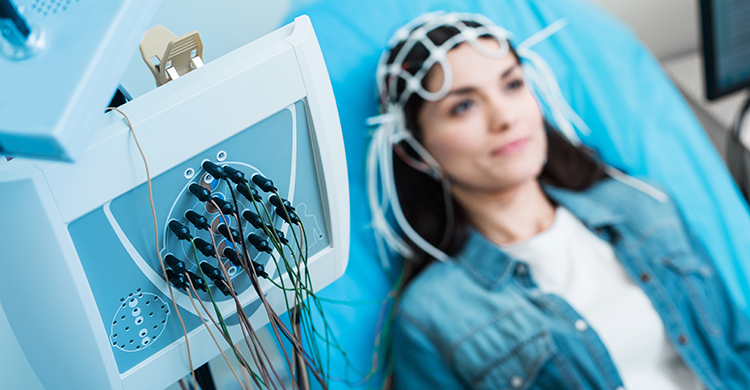
Electromyography
Electromyography (EMG) is a technique for evaluating and recording the electrical activity produced by skeletal muscles. EMG is performed using an instrument called an electromyograph, to produce a record called an electromyogram. An electromyograph detects the electrical potential generated by muscle cells when these cells are electrically or neurologically activated. The signals can be analyzed to detect medical abnormalities in conditions such as numbness, tingling, and weakness in the arms, legs, and trunk, neck pain, and lower back pain.
Nerve Conduction Studies
A nerve conduction study (NCS) is a measurement of the speed of conduction of an electrical impulse through a nerve. NCS can determine nerve damage such as due to compression or disease (e.g. diabetes) During the test, the nerve is stimulated, usually with surface electrode patches attached to the skin. Two electrodes are placed on the skin over the nerve. One electrode stimulates the nerve with a very mild electrical impulse and the other electrode records it. The resulting electrical activity is recorded by another electrode. This is repeated for each nerve being tested. The nerve conduction velocity (speed) is then calculated by measuring the distance between electrodes and the time it takes for electrical impulses to travel between electrodes.
Electroencephalogram
An electroencephalogram (EEG) is a study that records the brain’s electrical activity. This information is read and interpreted by our neurologists and broad certified neurophysiologists. EEGs are used to aid in the diagnosis of seizure disorders and cerebral pathologies. Leads are placed over the patients scalp. The electrical signals from the brain are then recorded on a computer. The procedure is painless and completed with in 45 minutes.
Evoked Potentials Studies
Evoked potentials studies measure electrical activity in the brain in response to stimulation of sight, sound, or touch. Stimuli delivered to the brain through each of these senses evoke minute electrical signals. These signals travel along the nerves and through the spinal cord or brain and are picked up by electrodes, amplified, and displayed for a doctor to interpret.
These studies include:
Visual Evoked Potentials (VEP)
Brainstem Auditory Evoked Response (BAER)
Somatosensory Evoked Potentials (SEP)
